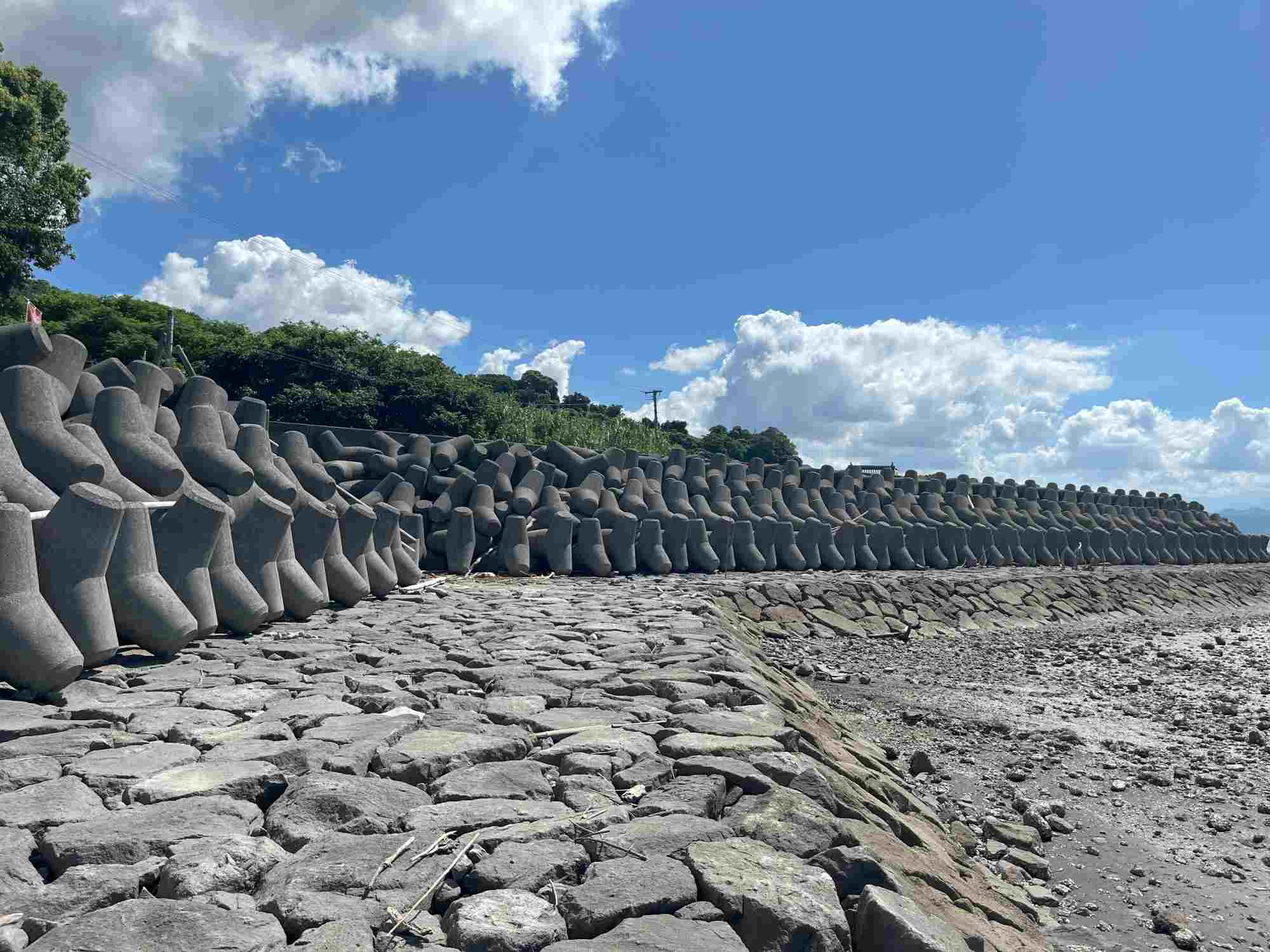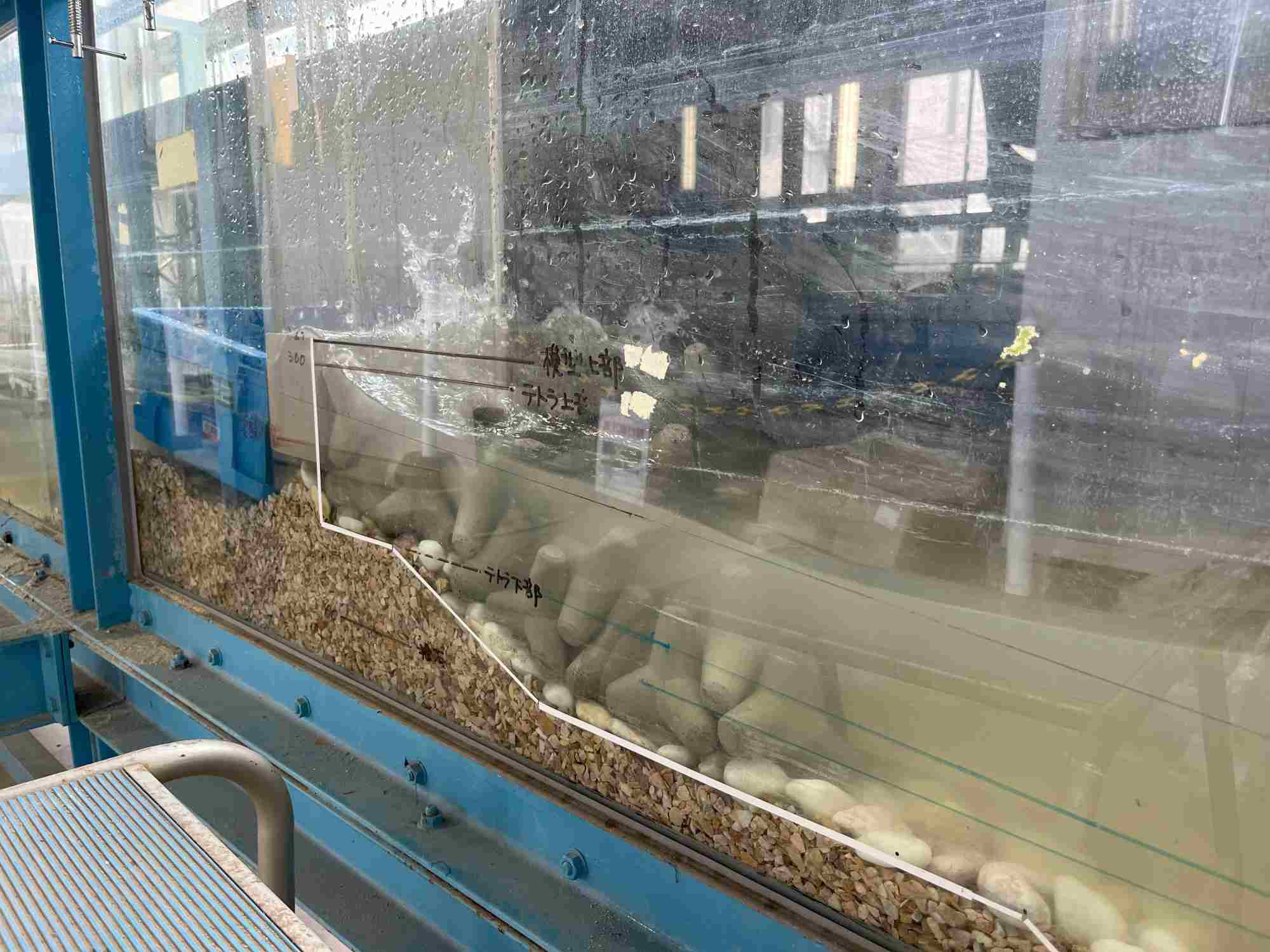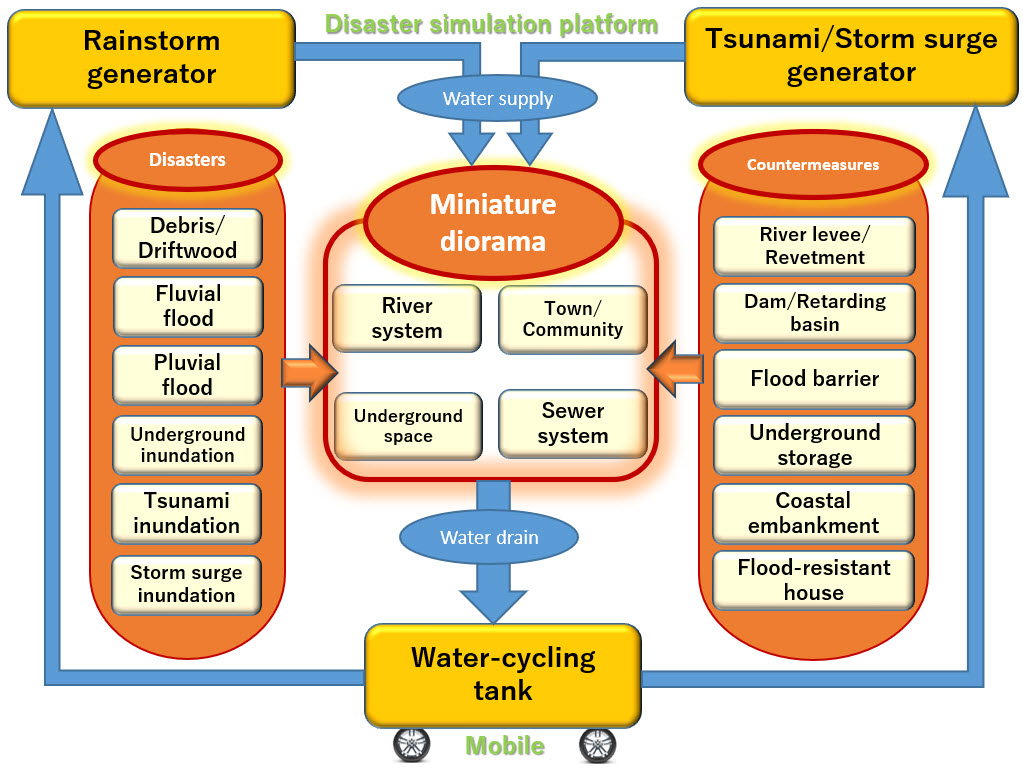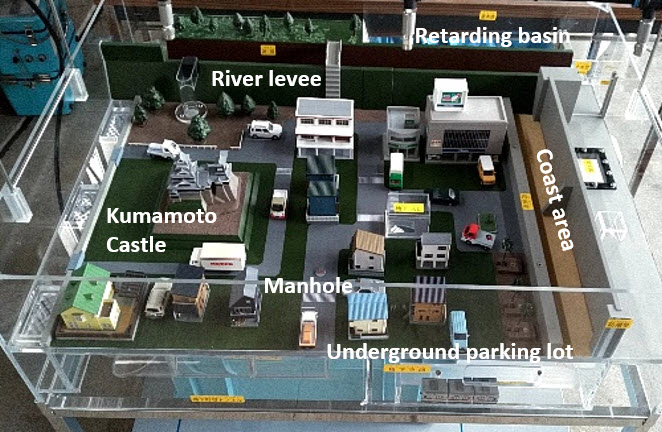The River Environment Laboratory was established in Kumamoto University in 1991. It has been contributing to the harmonizing of the demands of river environment and flood management through various eduction and research activitities. The main research topics of the laboratory include advanced numerical modeling of turbulent flow and sediment transport, environmental restoration study in water systems considering the optimization of hydraulic structures and indigenous knowledge, mechanisms and countermeasures for flood and sediment disasters due to extreme events, nature-based solutions (NbS) in coastal disaster prevention and research activities on disaster risk reduction (DRR) education. Some of the recent research topics are briefed as below.
(A) Advanced numerical modeling of turbulent flow and sediment transport
The prediction of the flow, sediment transport and morphological processes plays an important role in the flood management, design and maintenance of hydraulic structures, waterfront planning and assessment of aquatic habitats. With the new demands in the management of water basins and the development of social systems in recent decades, high accuracy and efficiency become a more and more crucial concern. Under this background, the laboratory is contributing to the advancement of numerical modeling of turbulent flow and sediment transport, particularly on the modeling of local flow details, sediment cohesiveness and nonuniformity,
coupling of deterministic and stochastic approches, as well as multi-dimensional modeling with unstructured mesh.

Model development for fine sediment transport and deposition
(B) Environmental restoration study in water systems considering the optimization of hydraulic structures and indigenous knowledge
The protection/restoration of the aquatic and waterfront environment is one of the most important topics in the hydraulic engineering. Research results from ecological communities suggest that the diversities of the flow patterns and morphological features play significant roles in the life cycles of many aquatic species and the sustainability of the aquatic and waterfront environment. Therefore, restoring the channel diversity is of great meaning in the environmental restoration. The restoration is achievable by creating new diversities or return the river to a state as close as possible to its previous pristine conditions. The laboratory is promoting research, particularly on the environmental implications of the construction of spur dykes/groynes and the decommission of weirs/dams in river systems. Futhermore, efforts are also made for the development of environment-friendly river management technologies based on indigenous knowledge from different countries/regions of the world.

Experiment and numerical simulation of local flow and scour around spur dyke
(C) Mechanisms of flood and sediment disasters due to extreme events
Heavy rainstorms and flash floods are on rise in recent years, as consequences of the change of the water cycle due to global warming and/or micro-climate changes caused by human activities. On the other hand, the vulnerability of our society to natural disasters is becoming higher and higher with the rapid urbanization and aging. In addition, recent catastrophic disasters indicate that disasters of different types and scales come together and pose new challenges in disaster prevention and mitigation. The damages following a compound type disaster including such as flash floods, urban inundations, debris flows and driftwoods are much more severe than those caused by a single one. Consequently, re-visiting the underlying processes of flood and sediment disasters and understanding what happened in the disaster affected area are significant to clarify the mechanisms of various disasters and to make disaster prevention and mitigation plans. In this laboratory, both basic research and applied research are conducted based on laboratory experiments, numerical simulations and field surveys.

Water level monitoring for integrated management of river and sewer system
(D)
Nature-based Solutions in Coastal Disaster Prevention
The disaster process in coastal areas appears to be varying due to the sea level rise and the
intensification of typhoons that could be associated with climate change. However, reinforcing
coastal protection structures, such as seawalls, can directly lead to even more environmental
burdens. As such, approaches that utilize characteristics of the nature, known as Nature-based
Solutions, are gaining attention. Our laboratory is conducting research on hybrid coastal
structures that combine existing seawalls with nature-based structures placed in front of them
and evaluating their effectiveness in coastal disaster prevention.


Nature-based solutions (NbS) in coastal disaster prevention
(E)
Research activities on disaster risk reduction (DRR) education
As one of the most important components of disaster
management, disaster risk reduction (DRR) education is attracting more and
more attention. Over the years, a lot of approaches have been developed and
implemented worldwide such as DRR lectures, photos/videos projection, hazard
mapping, application of computer graphics (CG) and/or virtual reality (VR),
disaster experience games and disaster drills. Nevertheless, much room
remains to improve the effectiveness of DRR education.
The laboratory is developing new approaches and tools based on physical
models which make the disaster phenomena, mechanisms and countermeasures
visible and easily understandable.


Water disaster simulator and its application in Kumamoto City